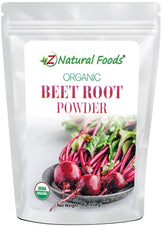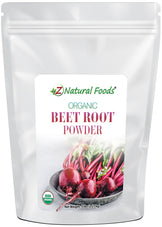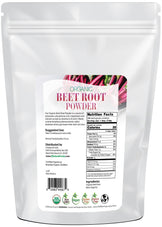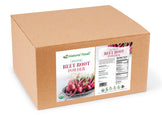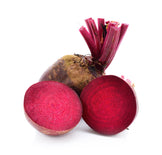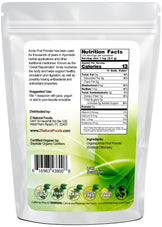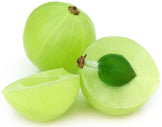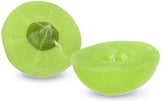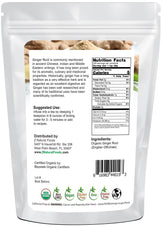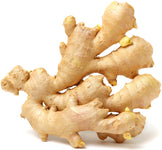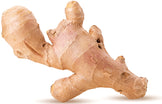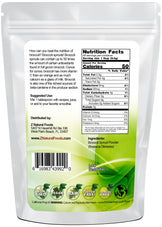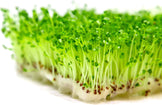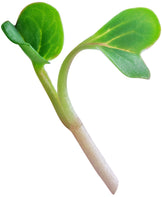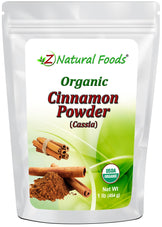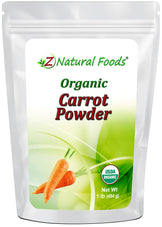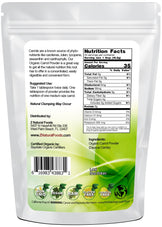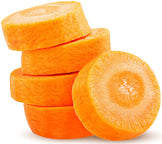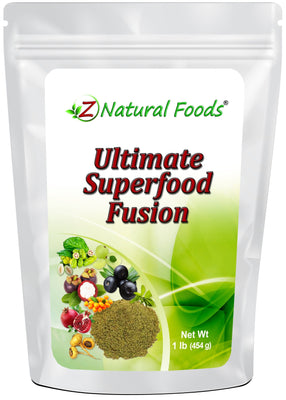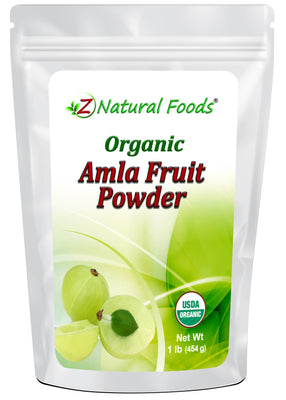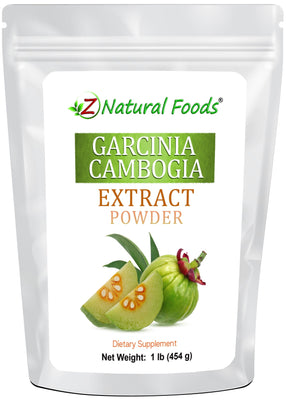About Product
While grapefruits are considered the king of the citrus family, don’t allow the simplicity of its bright yellow tart and tangy cousin, the lemon, to fool you.
This magnificent fruit is a highly versatile food that can be consumed in various ways. Whether eaten straight, squeezed into a glass of warm water, or used directly on your food to give it a fresh and delicious taste (extremely popular in Mediterranean food), lemons are well-known for containing a treasure trove of nourishment.
Z Natural Foods’ sees it as our mission to provide our valued customers with highly functional foods in their most versatile form with limitless application. So, we introduce Z Natural Foods’ Certified Organic and Freeze-Dried Lemon Powder.
Constituents of Lemon include:
- Minerals: Calcium, Iron, Magnesium, Phosphorus, Potassium, Sodium, Copper, Zinc, Manganese
- Vitamins: Vitamin C, B-complex (no b12), Vitamin A, Beta Carotene, Beta Cryptoxanthin, Lutein, Zeaxanthin
- Flavonols: Quercetin
- Flavanones: Eriodictyol, Hesperetin, Naringenin, polyphenols, and terpenes
Suggested Use: Mix one tablespoon in recipes, juice, or your favorite smoothie.
Mixing Suggestions: To increase flavor and nutritional profile, combined with our organic acerola and camu camu powders.
Miscellaneous facts about our Whole Raw Organic Freeze-dried Lemon Powder
Certifications: USDA Certified Organic.
Ingredients: Organic Freeze-Dried Lemon (Citrus limon), Silicon dioxide.
Parts Used: Whole Lemon including skin, seeds and albedo.
Botanical Name: Citrus Limon.
Other Names: Limón, Limonero.
Origin: Grown and dried in the USA and packaged with care in Florida, USA.
How to Maintain Optimum Freshness
- This product is packaged in airtight stand-up, resealable foil pouches for optimum freshness.
- Once opened, push the air out of the pouch before resealing it to preserve maximum potency.
- Keep your powder in a cool, dark, dry place.
This product is 100% natural and minimally processed:
Taste, smell, texture, and color vary from batch to batch. Go here to learn why our products may naturally vary.
The important protections we take to bring you safe and nutritious superfoods:
Please go here to discover the essential steps we take to deliver fresh, quality nutrition.
Bulk Quantities?
Need to order a large quantity of our products? We are happy to help! Please get in touch with our Bulk department to discuss the details.
* Product packaging, pictures, and origin may vary.
Sources & References
1. Berhow MA, Bennett RD, Poling SM, et al. Acylated flavonoids in callus cultures of Citrus aurantifolia. Phytochemistry 1994 Jul;36(5):1225-7. 1994. PMID:13170.
2. Cho E, Seddon JM, Rosner B, Willett WC, Hankinson SE. Prospective study of intake of fruits, vegetables, vitamins, and carotenoids and risk of age-related maculopathy. Arch Ophthalmol. 2004 Jun;122(6):883-92. 2004. PMID:15197064.
3. Ensminger AH, Ensminger, ME, Kondale JE, Robson JRK. Foods & Nutrition Encyclopedia. Pegus Press, Clovis, California. 1983.
4. Ensminger AH, Esminger M. K. J. e. al. Food for Health: A Nutrition Encyclopedia. Clovis, California: Pegus Press; 1986. 1986. PMID:15210.
5. Fortin, Francois, Editorial Director. The Visual Foods Encyclopedia. Macmillan, New York. 1996.
6. Gharagozloo M, Ghaderi A. Immunomodulatory effect of concentrated lime juice extract on activated human mononuclear cells. J Ethnopharmacol 2001 Sep;77(1):85-90. 2001. PMID:13160.
7. Kawaii S, Tomono Y, Katase E, et al. Antiproliferative effects of the readily extractable fractions prepared from various citrus juices on several cancer cell lines. J Agric Food Chem 1999 Jul;47(7):2509-12. 1999. PMID:13190.
8. Khaw KT, Bingham S, Welch A, et al. Relation between plasma ascorbic acid and mortality in men and women in EPIC-Norfolk prospective study: a prospective population study. European Prospective Investigation into Cancer and Nutrition.
Lancet. 2001 Mar 3;357(9257):657-63. 2001.
9. Kurl S, Tuomainen TP, Laukkanen JA et al. Plasma vitamin C modifies the association between hypertension and the risk of stroke. Stroke 2002 Jun;33(6):1568-73. 2002.
10. Mata L, Vargas C, Saborio D, Vives M. Extinction of Vibrio cholerae in acidic substrata: contaminated cabbage and lettuce treated with lime juice. Rev Biol Trop 1994 Dec;42(3):487-92. 1994. PMID:13210.
11. Misra N, Batra S, Mishra D. Fungitoxic properties of the essential oil of Citrus limon (L.) Burm. against a few dermatophytes. Mycoses 1988 Jul;31(7):380-2. 1988. PMID:13150.
12. Miyake Y, Murakami A, Sugiyama Y, et al. Identification of coumarins from lemon fruit (Citrus limon) as inhibitors of in vitro tumor promotion and superoxide and nitric oxide generation. J Agric Food Chem 1999 Aug;47(8):3151-7. 1999. PMID:13130.
13. Ogata S, Miyake Y, Yamamoto K, et al. Apoptosis induced by the flavonoid from lemon fruit (Citrus limon BURM. f.) and its metabolites in HL-60 cells. Biosci Biotechnol Biochem 2000 May;64(5):1075-8. 2000. PMID:13120.
14. Pattison DJ, Silman AJ, Goodson NJ, Lunt M, Bunn D, Luben R, Welch A, Bingham S, Khaw KT, Day N, Symmons DP. Vitamin C and the risk of developing inflammatory polyarthritis: a prospective nested case-control study. Ann Rheum Dis. 2004 Jul;63(7):843-7. 2004. PMID:15194581.
15. Rodrigues A, Brun H, Sandstrom A. Risk factors for cholera infection in the initial phase of an epidemic in Guinea-Bissau: protection by lime juice. Am J Trop Med Hyg 1997 Nov;57(5):601-4. 1997. PMID:13200.
16. Rodrigues A, Sandstrom A, Ca T, et al. Protection from cholera by adding lime juice to food - results from community and laboratory studies in Guinea-Bissau, West Africa. Trop Med Int Health 2000 Jun;5(6):418-22. 2000. PMID:13180.
17. Wood M. Citrus Compound, Ready to Help Your Body! Agricultural Research, February 2005. 2005.
18. Wood, Rebecca. The Whole Foods Encyclopedia. New York, NY: Prentice-Hall Press; 1988. 1988. PMID:15220.
19. Morton (1987). "Lemon in Fruits of Warm Climates." Purdue University. pp. 160–168.
20. Gulsen, O.; M. L. Roose (2001). "Lemons: Diversity and Relationships with Selected Citrus Genotypes as Measured with Nuclear Genome Markers." Journal of the American Society of Horticultural Science 126: 309–317.
21. James Lind (1757). A treatise on the scurvy. Second edition. London: A. Millar.
22. Douglas Harper. "Online Etymology Dictionary."
23. Spalding, William A. (1885). The orange: its culture in California. Riverside, California: Press and Horticulturist Steam Print. p. 88. Retrieved March 2, 2012.
24. Carque, Otto (2006) [1923]. Rational Diet: An Advanced Treatise on the Food Question. Los Angeles, California: Kessinger Publishing. p. 195. ISBN 978-1-4286-4244-7. Retrieved March 2, 2012.
25. "Complete List of Four Winds Dwarf Citrus Varieties." Fourwindsgrowers.com. Retrieved June 6, 2010.
26. Buchan, Ursula (January 22, 2005). "Kitchen garden: lemon tree." The Daily Telegraph (London). Retrieved January 24, 2014.
27. Variegated pink at the Citrus Variety Collection.
28. "Taste of a thousand lemons." Los Angeles Times. September 8, 2004. Retrieved November 21, 2011.
29. "New Zealand Citrus." ceventura.ucdavis.edu. Retrieved June 13, 2010.
30. M. Hofrichter (2010). Industrial Applications. Springer. p. 224. ISBN 978-3-642-11458-8.
31. "6 ingredients for a green, clean home". Shine. Retrieved April 24, 2008.
32. 9 Ohio State University Research, March 3, 2008 Study is published in the March 2008 issue of the journal Psychoneuroendocrinology
33. "Lemon Power". California Energy Commission. Retrieved December 7, 2014.
34. "Production/Crops of Lemons and Limes, World by Countries." Food and Agriculture Organization of the United Nations, Statistics Division (FAOSTAT). 2013. Retrieved 22 November 2015.
35. Rauf A, Uddin G, Ali J (2014). "Phytochemical analysis and radical scavenging profile of juices of Citrus sinensis, Citrus anrantifolia, and Citrus limonum." Org Med Chem Lett 7 (4): 5. doi:10.1186/2191-2858-4-5. PMC 4091952. PMID 25024932.
36. http://ndb.nal.usda.gov/ndb/foods
37. Penniston KL, Nakada SY, Holmes RP, Assimos DG (2008). "Quantitative Assessment of Citric Acid in Lemon Juice, Lime Juice, and Commercially-Available Fruit Juice Products" (PDF). Journal of Endourology 22 (3): 567–570. doi:10.1089/end.2007.0304. PMC 2637791. PMID 18290732.
* Reviews & Success Stories Disclaimer
Product reviews solely reflect the views and opinions expressed by the contributors and not those of Z Natural Foods. Z Natural Foods does not verify or endorse any claims made in these reviews. Statements have not been evaluated by the FDA and are not intended to diagnose, treat, cure, or prevent any disease or health condition.REFERRAL PROGRAM
Share your personal link to your friends and welcome them with rewards. Claim yours when they make their first purchase.

GIVE
$10 off discount

GET
$10 off discount




































